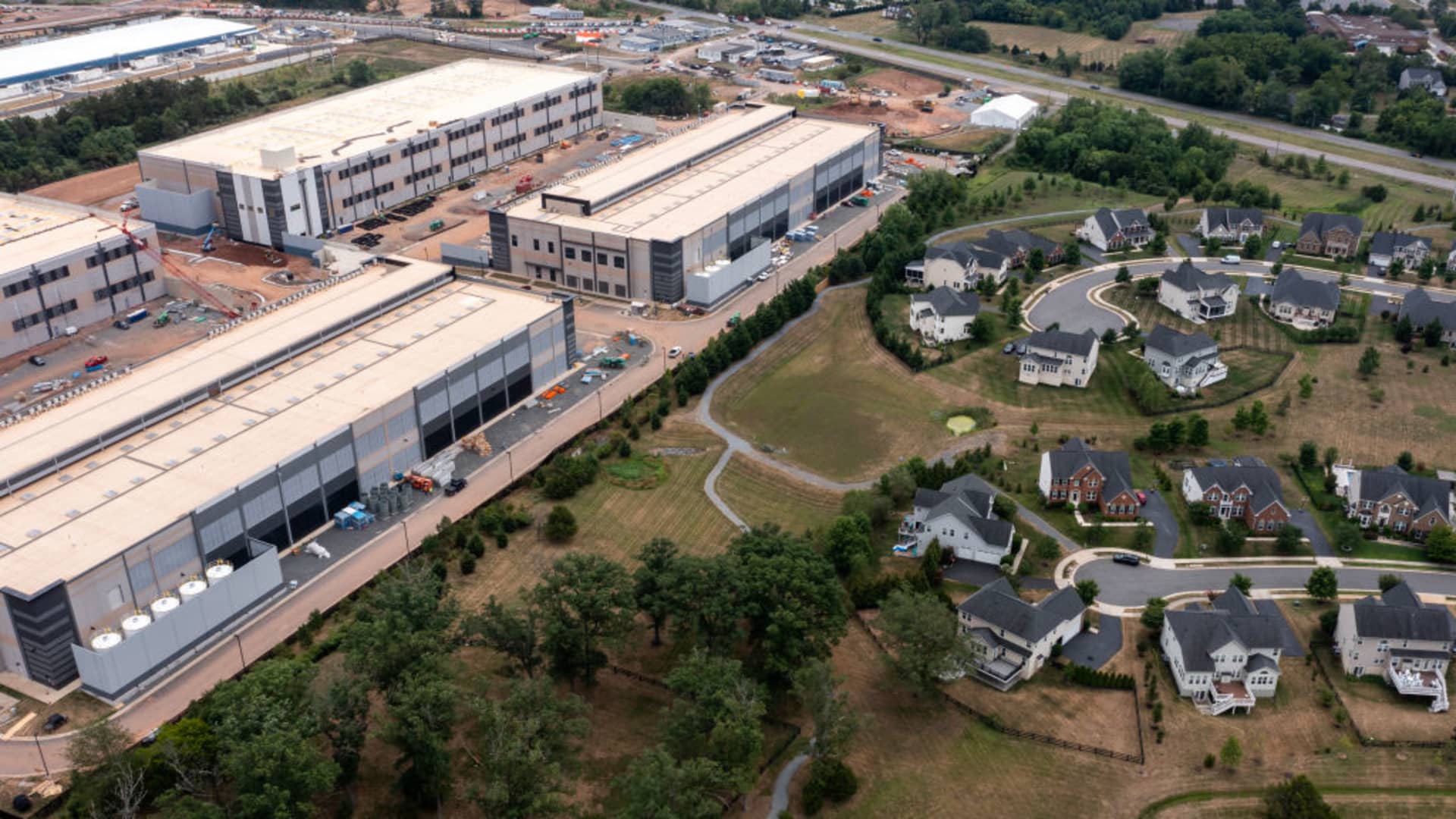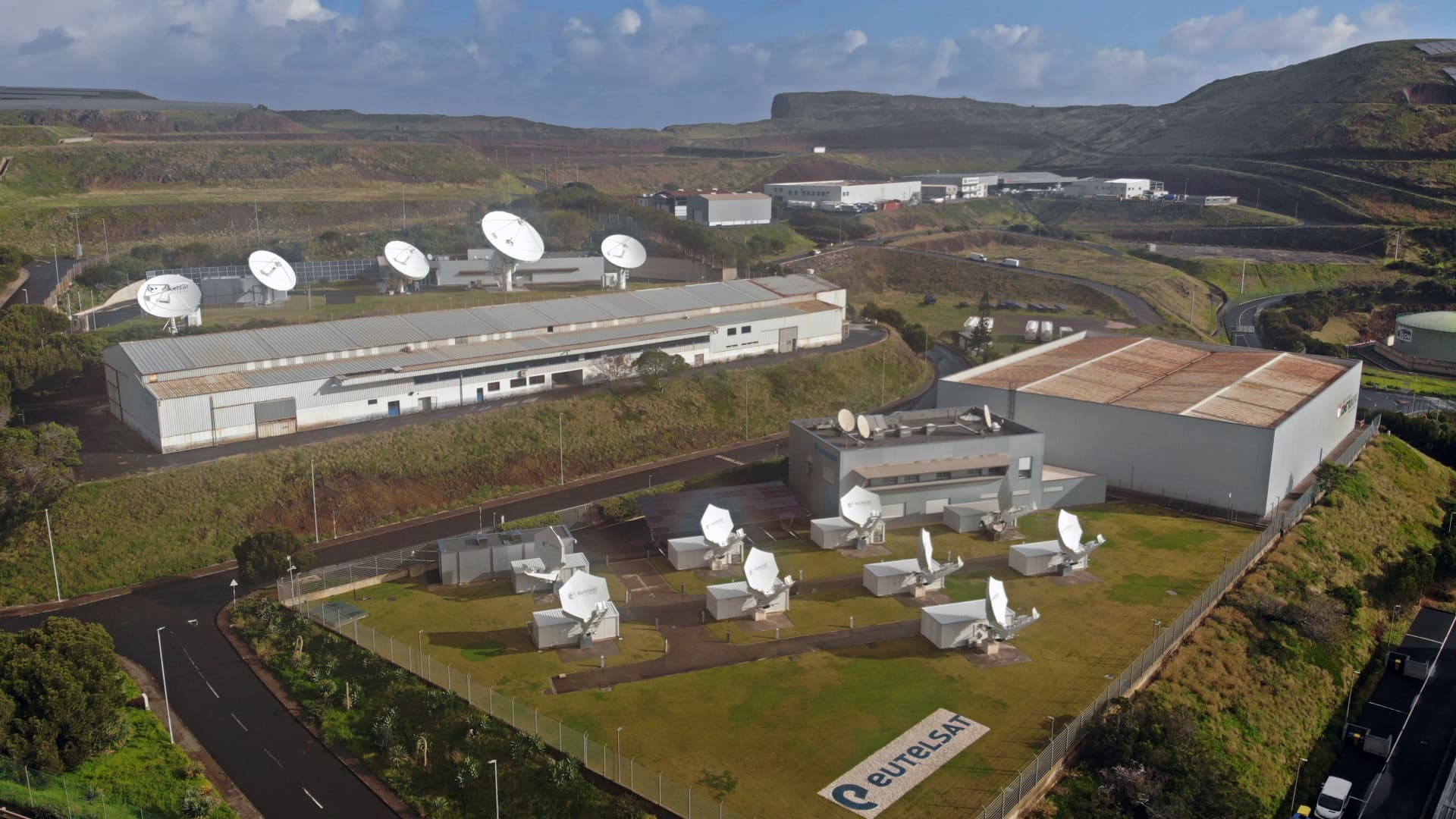Anadolu | Anadolu | Getty Images
Overview: Iron Dome’s performance could be Golden Dome’s opportunity
Israel and Iran resumed fire exchanges at the end of last week, and space and defense enthusiasts have been following the fusillades. Front and center has been the use of drones in this new leg of the conflict and the health of Israel’s infamous Iron Dome missile defense system, as it fought off a barrage of drones and missiles.
There’s an inevitable connection: the Iron Dome’s currently doing the job in Israel that U.S. President Donald Trump wants to get done at home through the proposed Golden Dome multi-layered missile defense system — a costly $175 billion concept so cutting edge that lawmakers and analysts have often questioned its viability. On one hand, you have the Congressional Budget Office warning that the project could cost as much as $542 billion. On the other, space and defense companies are chomping at the bit to fast-track Trump’s ambitions from executively ordered vision to satellite-touting reality before the 2029 end of his term.
“The performance of Israel’s multi-tiered missile defense system underscores the urgent need to strengthen U.S. missile defenses. Thus far, Israeli missile defense inventories have kept up with the Iranian threat — buying decisionmakers valuable time to not just defend the goal but to score some,” Patrycja Bazylczyk, research associate at the Center for Strategic and International Studies’ Missile Defense Project, told CNBC by email.
“U.S. policymakers should view this as a nod towards the importance of building inventories well before the fight, in the event of a missile attack from either Russia or China, we will be facing far more complex, and numerous salvos,” she added.
Like a Hollywood revenant, Golden Dome rose from the ashes of Ronald Reagan’s Strategic Defense Initiative — nicknamed “Star Wars” — that died a long death to a string of arguments over tech obstacles, steep price tags and the potential to kick off a new arms race with the Soviet Union. Unsurprisingly, Russia and China have been the starkest foreign detractors of Golden Dome, which sets out to defend the vast spread of the U.S. homeland from ballistic, hypersonic and cruise missiles through a web of satellites, sensors and interceptors. The timing isn’t ideal — both superpowers doth protest too much at a point when the major arms control deal between Washington and Moscow, the New START treaty, is set to lapse next year without a successor, while U.S. talks on a similar topic with Beijing were suspended in 2024.
Within the industry, Golden Dome looks like a mighty fine bone thrown to private space companies faced with severe budget cuts at key U.S. space contractor NASA. For the past few months, defense and space businesses have been vying for a slice of the project’s pie, especially after Elon Musk’s recent public feud with Trump left SpaceX’s potential role in the scheme under question. Take a look at the Paris Air Show — a sprawling affair enveloping Le Bourget Airport in the northeast of the French capital every two years. Around 45% of this year’s show is offering a stage to defense and security this year, and the likes of U.S. defense and aerospace manufacturer LockHeed Martin and Boeing used the platform to tout their Golden Dome credentials.
“We clearly have a whole number of product lines that will contribute very well, that are going to fit very well with what is necessary to achieve the mission,” Lockheed Martin President of Missiles and Fire Control Tim Cahill said, according to Reuters.
Golden Dome’s progressing, but time will tell if it’s here to stay. On June 10, two Republican members of the House of Representatives, Rep. Dale W. Strong (AL-05) and Rep. Jeff Crank (CO-05) announced the formation of a Golden Dome Caucus that will work closely with the Senate’s own initiative, in a bid to back Trump’s plans. Meanwhile, the House Appropriations Committee unveiled the draft of its fiscal 2026 defense spending bill that features a cool $831.5 billion top spend line — and a $13 billion allocation for “missile defense and space programs to augment and integrate in support of the Golden Dome effort.” That’s a respective $8.8 billion and $4.1 billion for missile defense and space programs backing the project, in the fine print.
Don’t worry, there’s a deal to be had: Trump’s reassured Canada it can skip a newly upped $71 billion fee to enjoy Golden Dome’s benefits — if it just becomes part of the United States.
Even better, Washington could end up a trendsetter across the Atlantic.
“I don’t know about the Golden Dome in the U.S. and so forth, but I do believe that we have to create an integrated … missile defense system, also in the European perspective, and there are initiatives going in that direction,” Micael Johansson, CEO of Swedish aerospace and defense company Saab, told CNBC’s Charlotte Reed at the Paris Air Show. “We have to have a European setup around that, and we have that capability with all the companies in Europe.”
What’s up
- NASA delays ISS launch amid scrutiny of lab leaks — NASA has postponed a private astronaut launch to the International Space Station amid efforts to investigate air leaks in the Russian modules of the orbiting station. — Washington Post
- China looks at global space weather monitoring network — Five Chinese research institutions have banded to push an international drive to build a sophisticated ground-based monitoring system to decipher space weather. — Space Daily
- NASA ends remote working — NASA has instructed all Jet Propulsion Lab staff to return to on-site work by late 2025 in a reversal of the Covid-19 protocol, with employees who don’t make the shift considered to have resigned. — BBC Sky at Night Magazine
- World-first view of the Sun’s south pole — The European Space Agency’s Solar Orbiter has captured the first photographs of the Sun’s south pole — and is set to get an even better view in January 2027. – Explorers Web
- European Space Agency looking at NASA budget cuts impacts — The European Space Agency’s Director General Josef Aschbacher said the agency is studying options for space programs that could be affected by proposed budget cuts at U.S. counterpart NASA. — Space News
Industry maneuvers
- U.S. reviews SpaceX contracts — The White House has asked the Defense Department and NASA to get details on the federal contracts held by Elon Musk’s SpaceX, following a heated showdown between the tech billionaire and White House leader Donald Trump, Reuters cites four sources as saying. — Reuters
- SpaceX’s Starship explodes during routine test — A Starship rocket exploded during testing at the Starbase facility, local authorities said. It experienced a “major anomaly,” according to SpaceX — CNBC
- Blue Origin unveils crew for 13th launch — Jeff Bezos’ Blue Origin has shared the six-passenger list of its next suborbital space tourism flight — the company’s 13th crewed mission. — Space.com
- Vast’s Haven-1 space station viewable through VR app — Vast has released an app allowing the public to view the planned Haven-1 commercial space station. — Vast
Market movers
- Muon Space raises $90 million in new funding — Satellite maker Muon Space clinched $89.5 million in fresh funds to ramp up output and buy propulsion startup Starlight Engines. — Space News
- Redwire upsizes IPO — U.S. aerospace and space company Redwire upsized the public offering of 15.525 million of its shares for a total worth $260 million. — Stock Titan
On the horizon
- June 19-22 — International Space Development Conference 2025 in Orlando, Florida.
- June 20 — Rocket Lab’s Electron to depart with unknown payload out of Mahia, New Zealand.
- June 20 — China Aerospace Science and Technology Corporation’s Long March 3B/E to launch with unknown payload out of Xichang, China.
- June 21 — Blue Origin’s New Shepard heads out with crew out of Texas.
- June 22 — SpaceX’s Falcon 9 takes off with Starlink satellites out of Florida.
- June 22 — SpaceX’s Falcon 9 leaves Florida with Axiom Space’s four-passenger crew to the International Space Station.
- June 23 — Japan Aerospace Exploration Agency’s H-IIA to depart with the GOSAT-GW satellite out of Tanegashima.
- June 25 — SpaceX’s Falcon 9 flies out of Florida with Starlink satellites.
















Leave a Reply